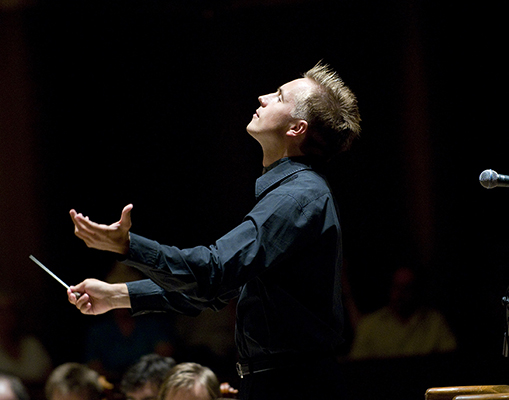 United States Elgar, Bartók: Cleveland Orchestra / Vasily Petrenko (conductor), Severance Hall, Cleveland, Ohio, 10.8.2018. (MSJ)
United States Elgar, Bartók: Cleveland Orchestra / Vasily Petrenko (conductor), Severance Hall, Cleveland, Ohio, 10.8.2018. (MSJ)

Elgar – In the South, Op.50
Bartók – Concerto for Orchestra
Last summer, Vasily Petrenko made a strong debut with the Cleveland Orchestra in a program that featured Rachmaninoff’s Second Symphony. Perhaps it was stereotypical for the young Russian conductor to lead with a Russian work, but his second program with the ensemble was far less predictable and launched with Elgar’s In the South. Petrenko has made some engaging recordings of Elgar with the Royal Liverpool Philharmonic, one of the three orchestras where the busy conductor is music director. Those recordings have included an outstanding Elgar Second Symphony, intense and dramatic. At a time when nationalists around the globe are throwing up more walls, it is encouraging to see others crossing borders with alacrity.
Elgar’s In the South was inspired by a vacation to Alassio, Italy, and it is the English composer’s most Straussian score. Instead of emphasizing its surface flash, however, Petrenko quickly dispensed with the opening flourish and dug into the more languorous passages that followed. This emphasis on darker colors made it clear that beneath the picture-postcard travelogue, the heart of this serious and anxious composer was still in place. In its more intimate pages, some forward momentum is lost, but nevertheless, it was engaging to hear such a thoughtful approach to this rarity, making only its third appearance on Cleveland Orchestra programs. The musicians attentively shaped the lush score, keeping the textures from becoming overloaded. Principal viola Wesley Collins was evocative in his solo in the moonlit central section.
It would be impossible to cite all the masterful solos in Bartók’s electrifying Concerto for Orchestra, designed to show off an orchestra’s brilliance. I had previously heard the piece three times at Severance, once by the Boston Symphony under Seiji Ozawa (back when touring orchestras used to visit Cleveland), and the other two times by the Clevelanders, with Sir Georg Solti and Iván Fische. Despite the fact that all three were formidable Bartók conductors, but Petrenko took the piece to a new level.
A remarkable fusion of symphony and concerto, Bartók’s score emerged startlingly fresh and alert, rather than a well-worn repertory standard. Petrenko was sensitive to the opening’s tense textures, and soon revved up into a brisk but never rushed trajectory through the constantly changing first movement.
Just as the final chord of the movement finished ringing out, Petrenko cued the side drum to start tapping out the irregular rhythm that mischievously marks the beginning of the second movement, Bartók’s witty ‘game of pairs.’ Without exaggerating, Petrenko encouraged the amazing Cleveland winds to strongly characterize their paired-up passages, with deft commentary from the rest of the orchestra. The following elegy was broad and dark, playing up the contrasts in the composer’s otherworldly textures.
Continuing again without pause, the fourth movement intermezzo began brightly and inquisitively, until the strings turned the mood grave. The mood brightened in the middle, where Bartók famously parodied Shostakovich’s Seventh Symphony. Petrenko sharpened the humor and gave the trombones plenty of room for their slapstick glissandos. He nailed the chilling instant switch from orchestral laughter to the hushed return of the strings’ theme. The finale took off at a tremendous clip, sustained throughout with skillful steering and electrifying playing.
This short concert was part of the Summers at Severance series in Cleveland, as opposed to the orchestra’s usual summer home at Blossom Music Center, where they appeared one day later in a completely different program, again under Petrenko. The Severance Hall event — replete with dancing out on the front steps of the hall afterward — was also a chance for the orchestra to break out another component of their new interactive archival display, the MagicBox, located just outside the Grand Foyer. The case holds artifacts from the Cleveland Orchestra Archives, but also projects images and plays audio chosen by viewers. The first display featured objects associated with the construction of Severance Hall, such as the trowel used in laying the cornerstone, and a score by Charles Martin Loeffler commissioned for its opening.
Mark Sebastian Jordan
